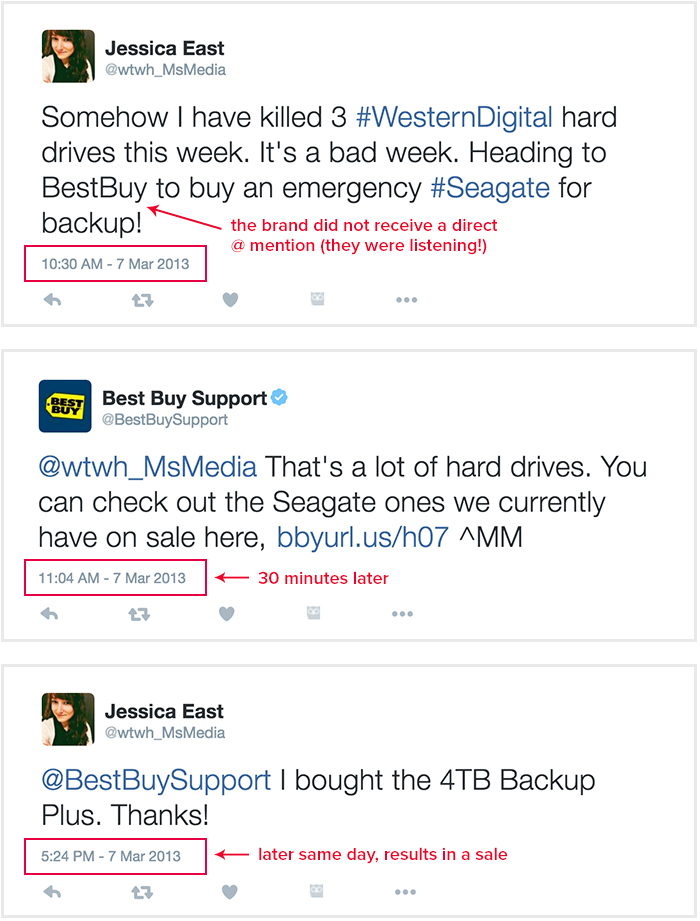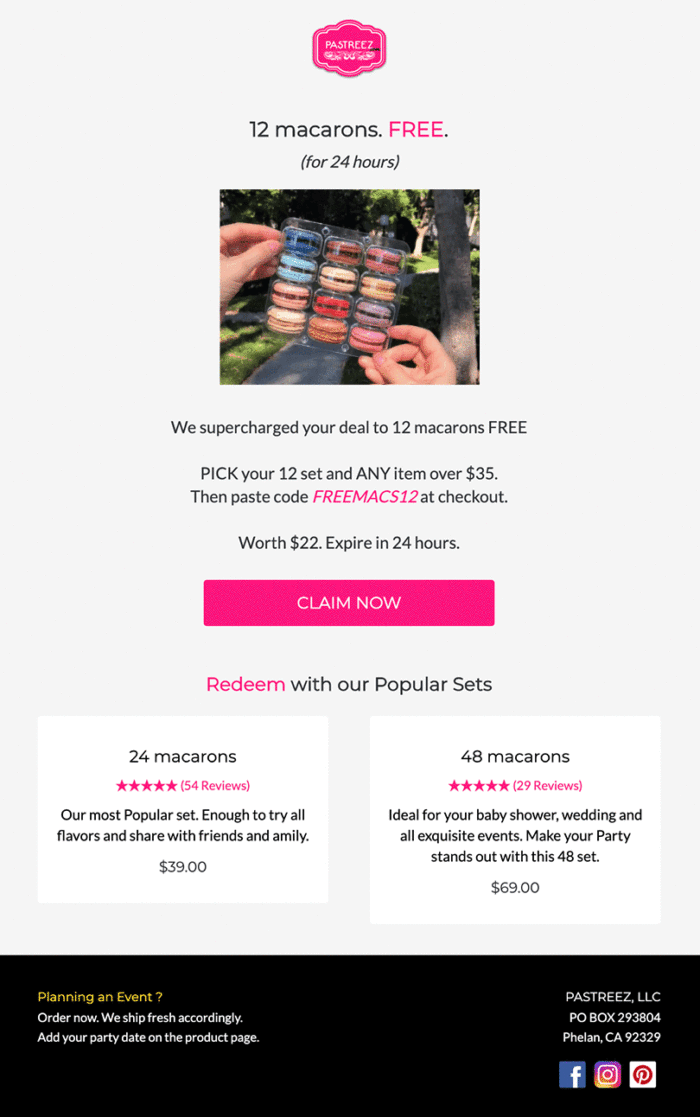Ecommerce Growth: Continue to Grow Your Store in 2020
When we surveyed 1,000+ ecommerce store owners a month ago, they said marketing would be their greatest key to success for 2020.
But a lot has changed the past couple of months, and we’re now seeing stores fighting to stay afloat. With businesses everywhere evolving, a focus on growth may fall slightly lower on your list of 2020 priorities. And yet, growth may still be possible for your ecommerce store right now, especially since what you do today prepares you for tomorrow’s success.
So, what’s the best use of your time? We looked at high-return strategies according to store owners like you.
Ecommerce growth strategies that offer the most return on your time
1. Content marketing
Content marketing is perhaps one of the most organic ways to market to your followers, subscribers, and leads. This strategy focuses on the pain points of brand advocates and would-be customers by providing free content they can use.
Because content marketing focuses on your audience, rather than directly discussing products or selling points, it’s much likelier to encourage people to interact with your brand. In fact, 72% of marketers say content marketing increases both engagement and leads.
So, how can you implement content marketing into your own ecommerce growth strategy? Below we’ve listed a few ways in which you can organically appeal to your audience.
Ways to implement content marketing:
- Blog posts
- Newsletters
- Ebooks
- Online classes
- Podcasts
- Videos
- Instagram stories
While the above list is far from exhaustive, it’s a great place to start. And if you’re feeling overwhelmed by available options, a consistent blog cadence is a simple way to begin your content marketing journey.
Blogs are simple to automate, and with the addition of a freelance writer or community manager, you can easily have this taken off your plate.
By incorporating an automated blog strategy into your marketing, you can begin to attract members of your target demographic—ideally, those who aren’t already familiar with your brand. Specific, well-researched SEO content is a natural way to familiarize prospects with your company.
For instance, subscription box company Flygirl Box publishes blog content that helps its target demographic: flight attendants. Notice how the blog post below educates frequent flyers instead of pushing a particular product:

But quality content doesn’t just benefit customers you hope to attract: Well-written articles are also useful for current, loyal customers who have questions about your brand and industry.
One survey suggested that 91% of consumers are likely to engage with a knowledge base that proactively pinpoints and answers their questions, and yet, many companies don’t offer this type of educational resource.
Luckily, your blog or knowledge base doesn’t have to be especially complex. You can easily find questions people are asking by performing keyword research or noting frequently asked questions from customers.
Just take a look at the knowledge base from our sister brand, Campaign Monitor. This resource hub targets specific questions and provides short write-ups for each:

As you can see, it’s possible you can access much of the content you need just by listening to your audience and providing the necessary information they need.
2. Customer support and sales
Second to marketing, our research states customer support and sales are ecommerce owners’ key to improvement. But during uncertain times, customer support and sales may not be top of mind. Yet, these are two aspects of your brand that can really contribute to growth.
Of course, being an ecommerce shop owner, it’s possible you’re doing the work of a support team and a sales team:
So, let’s cover some ways you can ramp up your efforts for both.
Support growth opportunities
Quality support could be the differentiating factor between you and other stores, especially when it comes to ecommerce growth efforts. 96% of consumers around the world agree customer service is an important factor when deciding loyalty to a brand. And when it comes to trust, customers rank excellent support efforts as their #1 indicator of trustworthiness.
So, how can you offer great support for ecommerce growth?
Customer support tips and tricks:
- Offer an FAQ and/or support hub.
- Provide clear contact information (including a phone number, hours available, and an email address).
- List an expected wait time.
- Respond in a timely manner.
- If possible, have knowledge about the customer’s account and buying history.
- Be courteous and empathetic.
- For faster service, pre-write canned responses you can tweak.
- Offer special treatment for “good” or loyal customers (nearly half of all customers expect this).
- Have an active, helpful social media presence.
Below, Best Buy responds to a tagged post with empathy and helpful content.

Sales growth opportunities
Sales can look different for different companies, but your ecommerce sales likely rely on loyal B2C relationships. And how do you build those relationships? In addition to great support, you should also provide the most seamless experience possible for your customers.
A beautiful, well-organized site, a smooth checkout experience, and limited barriers for your users are all essential to success. Many people will leave a site with an unattractive layout, and often the checkout process has more fields than necessary. Take away these barriers by creating a site with good UX design and consolidating form fields.
Below are some additional sales best practices when growing your ecommerce business.
Ecommerce sales tips and tricks:
- Optimize your shopping experience for mobile.
- Remove unexpected costs from checkout.
- Offer free shipping.
- Don’t force customers to create a user account.
- Send abandoned cart emails by setting up an abandoned cart workflow.
- Send promotional emails.
- Provide discounts on items of interest.
- Personalize based on customer data.
- Embed customer reviews directly into your emails.
Notice how CM Commerce customer Pastreez uses reviews directly inside promotional emails.

3. Email marketing
Obviously, we’re partial to email marketing here at CM Commerce, but that’s because email can grow your business and marketing efforts very quickly, without a lot of extra effort on your end.
In fact, most online shoppers who receive emails based on previous shopping habits are likely to buy again after receiving a targeted email, which shows how effective email automation can be for your ecommerce growth.
This is because email marketing’s a simple way to reach customers, and it’s a highly sophisticated form of communication. Plus, many more people use and trust email over social media, both in the US and around the world.
Plus, emails are easy to automate, providing consistency and timeliness to your customers. For instance, an abandoned cart email with a discount could save your sale. A replenishment email (like the example below), can be a well-timed reason for your subscriber to order a refill.

These are just a couple of examples, but there are actually a number of emails your ecommerce store can automate to encourage growth.
Ecommerce automated email examples:
- Transactional emails or receipts
- Abandoned cart emails
- Follow-up emails
- Newsletters
- Reviews and testimonials
- Surveys and feedback
Learn more about these types of automated emails here.
4. Social media marketing
While email marketing is perhaps a more proven way of reaching customers, social media marketing can also be powerful for ecommerce growth. After all, 23% of online shoppers are influenced by social media recommendations alone.
Luckily, social media and email can easily work together. For instance, you might include a link to your newsletter signup form in your Instagram bio, or you may ask subscribers to participate in a social media contest using a specific hashtag. Plus, social media can be more relaxed and spontaneous than email, giving you the opportunity to build out your brand’s persona.
If you’re interested in expanding your social media marketing efforts, we’ve put together a list of best practices.
Social media marketing tips and tricks:
- Create a social media marketing calendar to stay ahead.
- Opt for well-known platforms over up-and-coming ones.
- Use 80 characters or less for better engagement.
- Diversify your social media portfolio by using a variety of channels.
- Use video in your social media.
- Use photos in your posts to get more engagement and clicks.
Wrap up
While 2020 has certainly provided some unexpected challenges, ecommerce growth may still be possible for your shop. Whether you’re doubling down on your marketing strategy or tentatively planning ahead, we hope you can use the strategies above to build out your multichannel marketing strategy.
Learn more from the research study.
Many of the stats we cite in this blog are taken from our recent research study, Ecommerce Confessions: How 1000+ Store Owners Do It All and Still Find Time to Grow. You can read more insights and download the entire guide here.